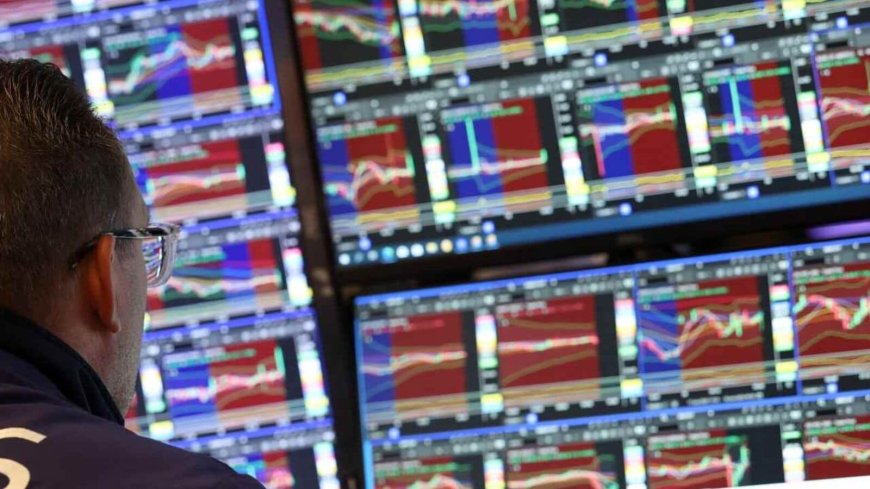Everyone Thinks the S&P 500 Is Too Expensive. Maybe It’s Too Cheap.
Despite record highs, the S&P 500 may not be overvalued. Analysts argue macro conditions, tech innovation, and earnings justify current valuations.

Wall Street’s Paradox: The Expensive-Looking S&P 500 Might Be Underpriced
As the S&P 500 continues to set record highs in 2025, crossing the 5,500 mark in June, a growing chorus of skeptics warns that the benchmark index is dangerously overvalued. With valuations stretched and megacap tech firms driving most of the gains, it’s not surprising that many investors are treading cautiously. But a contrarian school of thought is gaining ground—suggesting that far from being overpriced, the S&P 500 may actually be undervalued relative to future earnings potential, macroeconomic stability, and innovation-led growth.
The Valuation Debate: PE Ratios Paint an Incomplete Picture
By conventional metrics, the S&P 500 does appear expensive. The forward price-to-earnings (PE) ratio for the index is hovering around 21x—significantly above the historical average of around 16x. Some market participants point to this figure as a red flag.
“Valuations are elevated, no doubt,” said Sarah Mitchell, Chief Market Strategist at Franklin Rock Investments. “But you also have to contextualize those valuations in an era of falling interest rates, resilient corporate earnings, and tech-driven productivity.”
The key argument from the “maybe it’s cheap” camp lies in how forward-looking valuation models interpret current data. Adjusted for lower discount rates, persistent innovation, and the AI-fueled productivity boom, a 21x multiple may no longer be excessive.
Tech Dominance or Tech Revolution?
Another concern is market concentration. The so-called “Magnificent Seven”—Apple, Microsoft, Alphabet, Amazon, Meta, Nvidia, and Tesla—now account for roughly 30% of the index's market cap. Critics argue that this lopsided leadership distorts the broader market’s true health.
However, many strategists see this not as fragility, but transformation.
“These companies are not just large; they’re profit machines with global moats,” explained Rohit Sinha, Portfolio Manager at QuantumEdge Capital. “Their R&D spending alone outpaces the GDP of some small countries. If anything, their dominance justifies higher multiples.”
In fact, companies like Nvidia, which recently reported triple-digit revenue growth, are rewriting the norms of capital efficiency and earnings scalability.
Inflation, Rates, and Risk Premium Recalibration
The Federal Reserve’s cautious easing path and inflation stabilizing around 2.3% are further altering the landscape. Historically, equity risk premiums (ERP) fall when bond yields decline and growth becomes more predictable—making stocks relatively more attractive.
“The S&P 500’s premium over the 10-year Treasury is tight, yes, but that’s because the macro backdrop supports lower long-term rates,” said Daniel Wu, Senior Economist at BeaconMacro. “That changes the fair value calculus.”
In other words, the S&P 500 may look expensive in isolation but still be the best game in town when other assets like bonds or cash equivalents offer paltry returns.
Earnings Growth: Underappreciated and Underpriced?
Another overlooked aspect is corporate earnings. For Q2 2025, S&P 500 companies are expected to deliver over 10% year-on-year earnings growth, marking the third consecutive quarter of double-digit gains.
“Analysts are consistently underestimating earnings resilience,” said Tracy Mendoza, Research Head at GoldTree Partners. “Margins are expanding, balance sheets are strong, and buyback activity is robust. These aren’t hallmarks of an overheated, bubbly market.”
Indeed, when adjusted for earnings growth, the S&P’s PEG (Price/Earnings-to-Growth) ratio falls closer to 1.2—a level typically viewed as reasonable or even cheap by growth investors.
A Global Perspective: U.S. Stocks Still Look Attractive
Globally, U.S. equities continue to command a premium. Yet, in a world dealing with geopolitical tensions, tepid growth in Europe and China, and emerging-market instability, the U.S. remains a relatively safe and dynamic investment arena.
“Global capital keeps flowing into U.S. equities for a reason,” noted Linda Chau, Global Strategy Director at UBS Asset Management. “Stability, innovation, and earnings transparency give investors more confidence—even at higher multiples.”
Investor Outlook: Navigating Between Euphoria and Fear
While some level of caution is warranted—especially amid election-year volatility and pockets of speculation in certain sectors—many long-term investors are adopting a more nuanced view.
“There’s a tendency to think in extremes—either the market’s in a bubble or we’re in a golden age,” said Mark Benson, CIO of GreenRiver Capital. “The truth is, we’re in a paradigm shift, and we need new lenses to interpret it.”
Investors looking to navigate this terrain are increasingly focusing on quality—firms with durable earnings, high free cash flow, and leadership in critical technologies.
The S&P 500’s current valuation might look elevated through traditional lenses, but changing macroeconomic variables, innovation-led earnings, and evolving investor behavior warrant a reassessment. As long as corporate fundamentals hold and interest rates remain supportive, what seems “too expensive” could, paradoxically, be undervalued.
In a world redefined by AI, digital infrastructure, and productivity reinvention, it may be time to upgrade the models before declaring the market overpriced.
What's Your Reaction?
 Like
0
Like
0
 Dislike
0
Dislike
0
 Love
0
Love
0
 Funny
0
Funny
0
 Angry
0
Angry
0
 Sad
0
Sad
0
 Wow
0
Wow
0













































































